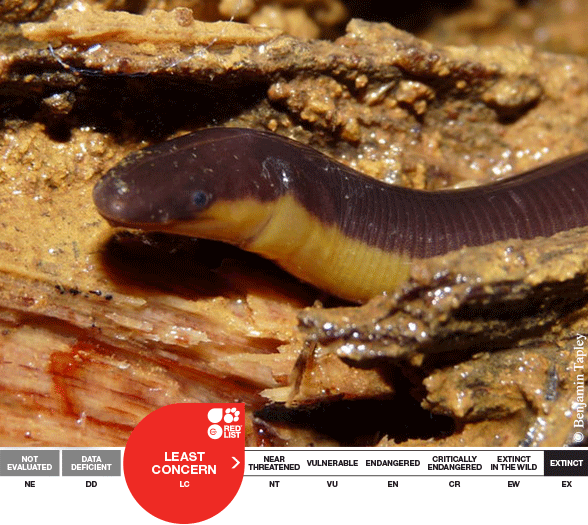
The Beddome’s Caecilian, Ichthyophis beddomei is a worm-like amphibian that can swim. Although the adults of the species do not appear to be comfortable with swimming, they can move through the water by making to and fro wave-like motions with their bodies. Females lay their eggs near the water and provide parental care by keeping the eggs moist, rotating them, and even moving the clutch of eggs when threatened. When the eggs are close to hatching, the female leaves the clutch and larvae hatch out with gills and enter the water. The larvae leave the water for burrows in soil after they metamorphose and absorb their gills. Beddome’s Caecilian, with its bright yellow colored sides and distinct eyes, can be commonly found the Western Ghats region of southern India, in the states of Kerala, Tamil Nadu, Maharashtra, and Karnataka. It is listed as ‘Least Concern’ on the IUCN Redlist of Threatened Species.
There are no current threats and this species can tolerate some habitat disturbance, habitat pollution from agriculture is a concern. However, while Beddome’s Caecilian is currently known as one of the most common caecilian in the Western Ghats, there are few documented occurrences of this species in public record (such as bio-collections) or through citizen science efforts.
Beddome’s Caecilian can be found in Wayanad Wildlife Sanctuary and Parambikulam Wildlife Sanctuary in Kerala, and may possibly be found in Idukki Wildlife Sanctuary in Kerala and Indira Gandhi National Park in Tamil Nadu.
